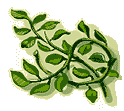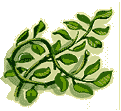![]()
Looking back through time at citrus fruit, the lemon family is one of the original varieties.
In comparison with the citron variety, history's journey reveals the common lemon variety reaching the Mediterranean, and Europe much later than the citron. There are many references to the journey of the lemon fruit in history, but the origins of the fruit remain in question. The Chinese author, Chou K'u-fei in A.D.1178, wrote a description of the fruit and how it was used by the people. The lemon fruit's juice was presented to the Chinese emperor's in the Sung dynasty. This offering indicates the fruit must have been widely grown and used long before this time. The available research of evidence, given in the derivation of the native names used in different countries, points to the origin being from the eastern Himalayan region. Arabs brought the citron, the sour orange, and the lemon into Spain and countries in northern Africa. The citrus fruits found their way into Europe by way of the Christian Crusaders. The Crusaders movement, as conquerors and traders, attracted them to desirable products of art and agriculture. During this period, these products were transplanted-the citrus fruits of the sour orange and the lemon.
A lemon tree is vigorous in growth, spreads upright, with a more open branch appearance. The growth rate of the common lemon variety grown here in Arizona, the Lisbon Lemon, can grow in spurts of 4-6 feet per year. If not pruned regularly, lemon trees can grow too rapidly, making many lemons on small branches, which can cause splitting of the tree from the weight of the fruit. With regular maintenance, the lemon tree can be attractive and productive. And they are productive; "One lemon tree per neighborhood" is a truism. Many lemon trees harvest can be seen wasting away from its owners having more than they need. Remember, share the wealth. Lemon tree blossoms are purple tinged, along with their new feather growth in the spring time. Their production times can be ever-bearing in cooler climates, and in warmer climates, the harvest time is in the fall, and late spring to early summer. This variety is probably the most requested variety for the home grower of citrus. Lemons are widely used in cooking, for drinks, and can be substituted for salt in low-sodium diets. Plus, the consumption of 5-9 servings of vegetables and fruits recommended by the National Institute of Cancer increases the need to include this versatile fruit as a staple. Greenfield Citrus Nursery grows the Lisbon Lemon, the Ponderosa Lemon, the Pink-Eureka Lemon, and the Butwal-(Sweet) Lemon. Check out these varieties on the harvest and comparison charts.
Citrus Harvest – Harvest Grapefruit, Arizona Sweets, Lemons, Kinnow Tangerines, and Minneola Tangelos now. New vegetative growth and flower bud development started about mid-February. The sweet scent of citrus blooms will begin to fill our air in March. Be careful while harvesting your citrus, so you do not break off the developing new growth and flower buds. Picking the fruit from the top down, earlier in the harvest season will help prevent this from happening.
Planting Citrus – The months of March and April are still considered to be a good time to plant citrus. However, when ever citrus are planted, the first summer can be a little rough on them. Going through 7 months of "summer" like conditions in a sunny spot while their roots are trying to get established in your soil, can be an up hill battle. Providing some man-made overhead shade over the newly planted citrus trees from about 9 AM to 4 PM will help enable the plant to endure these adverse conditions better. Often this temporary shade is more beneficial than water and/or fertilizer!!!
 | Frequently Asked Questions |  |
![]() Will my citrus trees attract bees? "I don't want bees around by citrus trees."
Will my citrus trees attract bees? "I don't want bees around by citrus trees."
A: Well, if you don't want bees around your citrus tree, you won't be getting any fruit. The bees are needed for pollination. Their foraging for nectar and pollen provides the pollination for the fruit production. Bees, the European variety, are not aggressive, and could care less about your presence, unless you come within 3 feet of their hive. They are busy working, important work, and you should be grateful, not scared. Bees, "the good ones", are decreasing in numbers due to the fear generated by the Africanized bees' aggression, and the news media's spin on the horrific attacks. Plants and flowers operate and depend on pollination. Our food supply depends on "the bee". We have bee hives brought in each spring to increase our bee numbers, to help with pollination, thereby, making the citrus fruit.
![]() When should I clear orange trees of remaining fruit?
When should I clear orange trees of remaining fruit?
A: Depends on what type they are. Valencia oranges will stay on until August. You really don't need to do this unless you are concerned about tree rats or something. The main reason farmers pick all of the non-sold fruit is because some will remain on the tree and pick up the green chlorophyll coloring again but will remain dry. Then, the following year, those dry fruit get in the way of the newer fruit being harvested. You will easily be able to tell the old from the new by weight, not by color. The old fruit from the previous year are always really light and puffy.